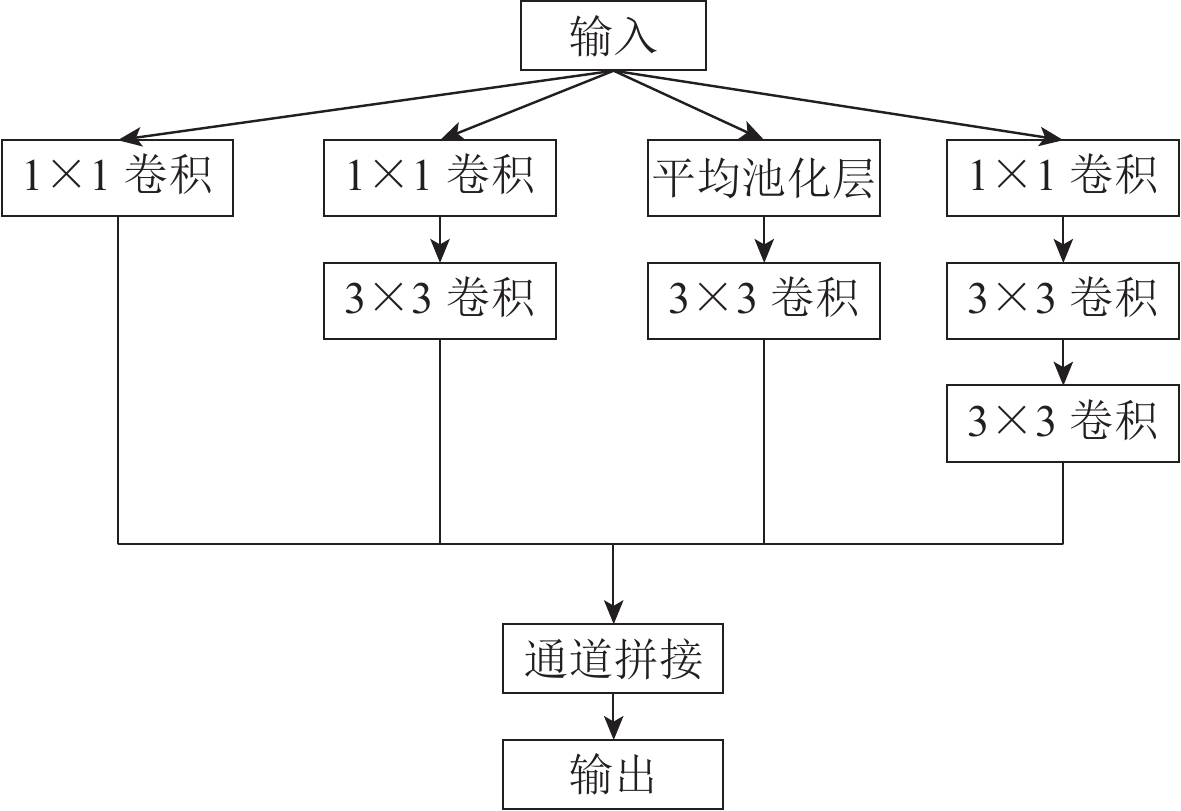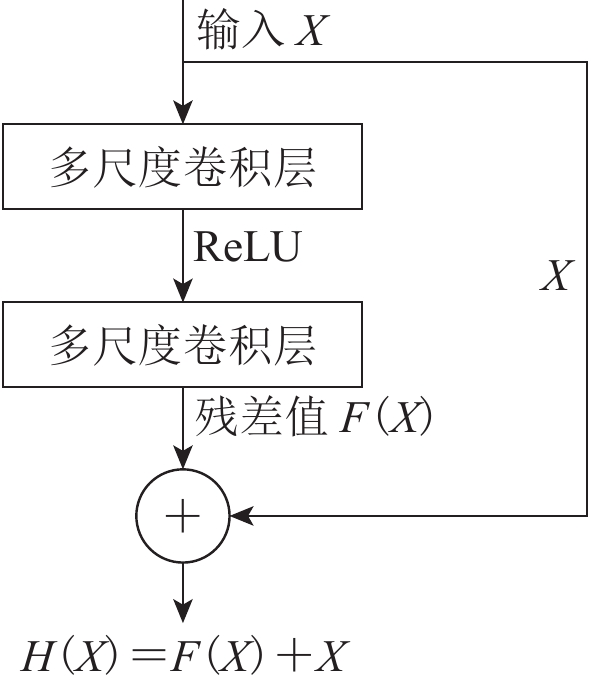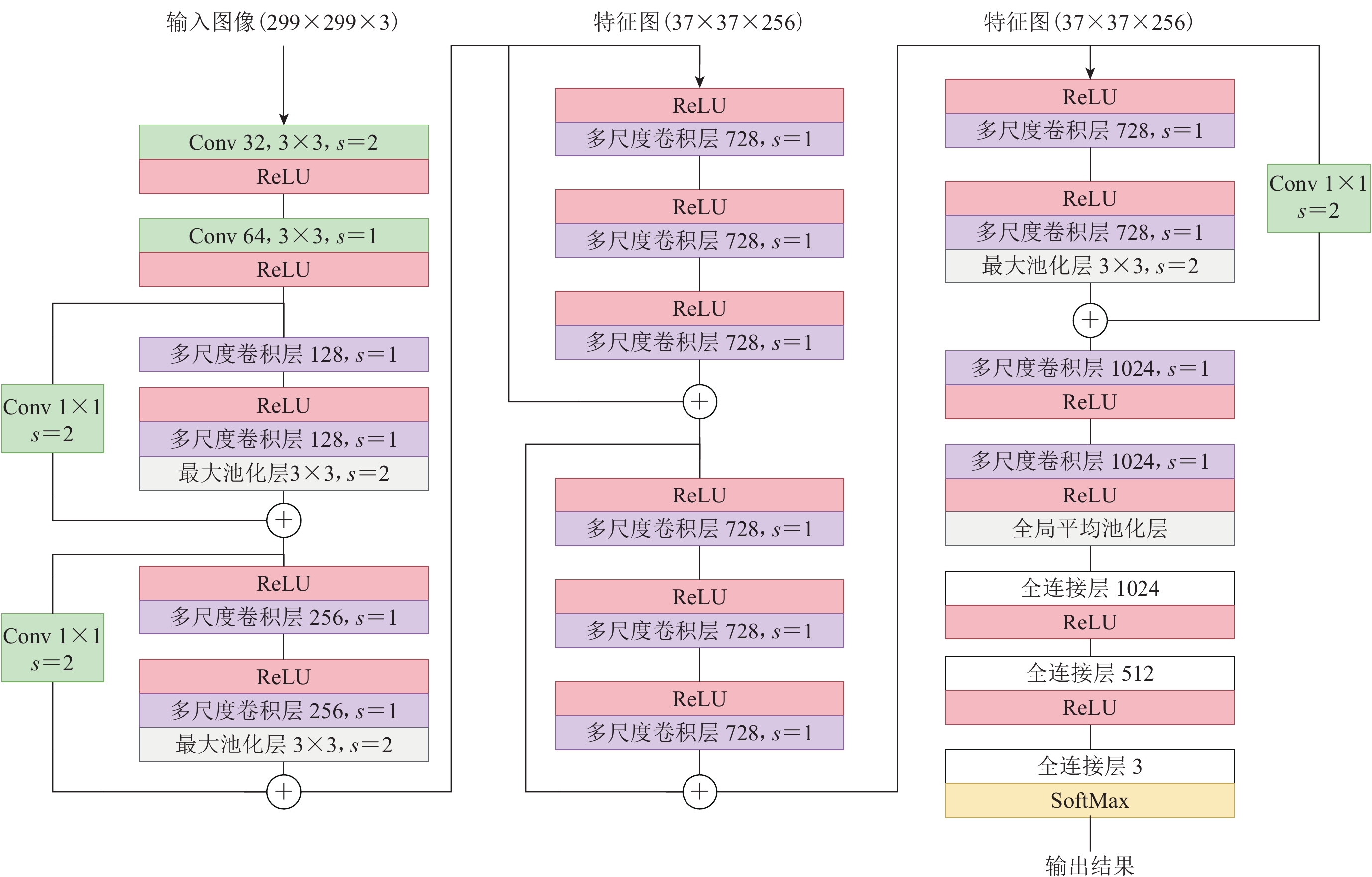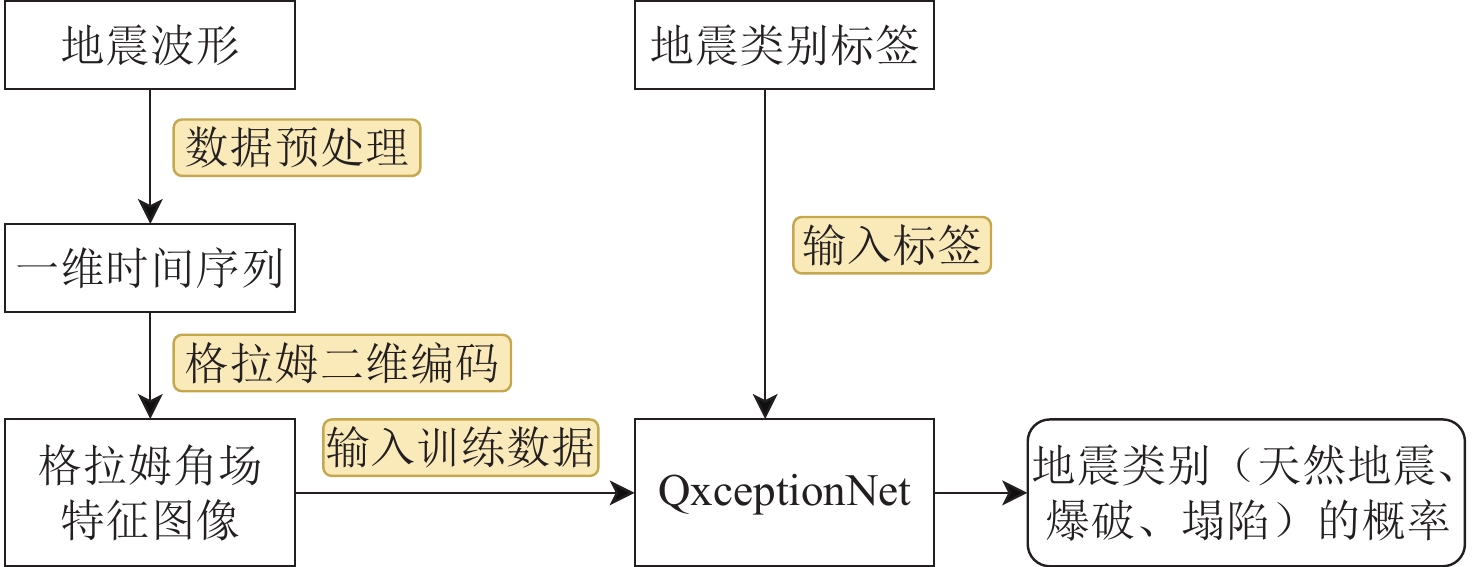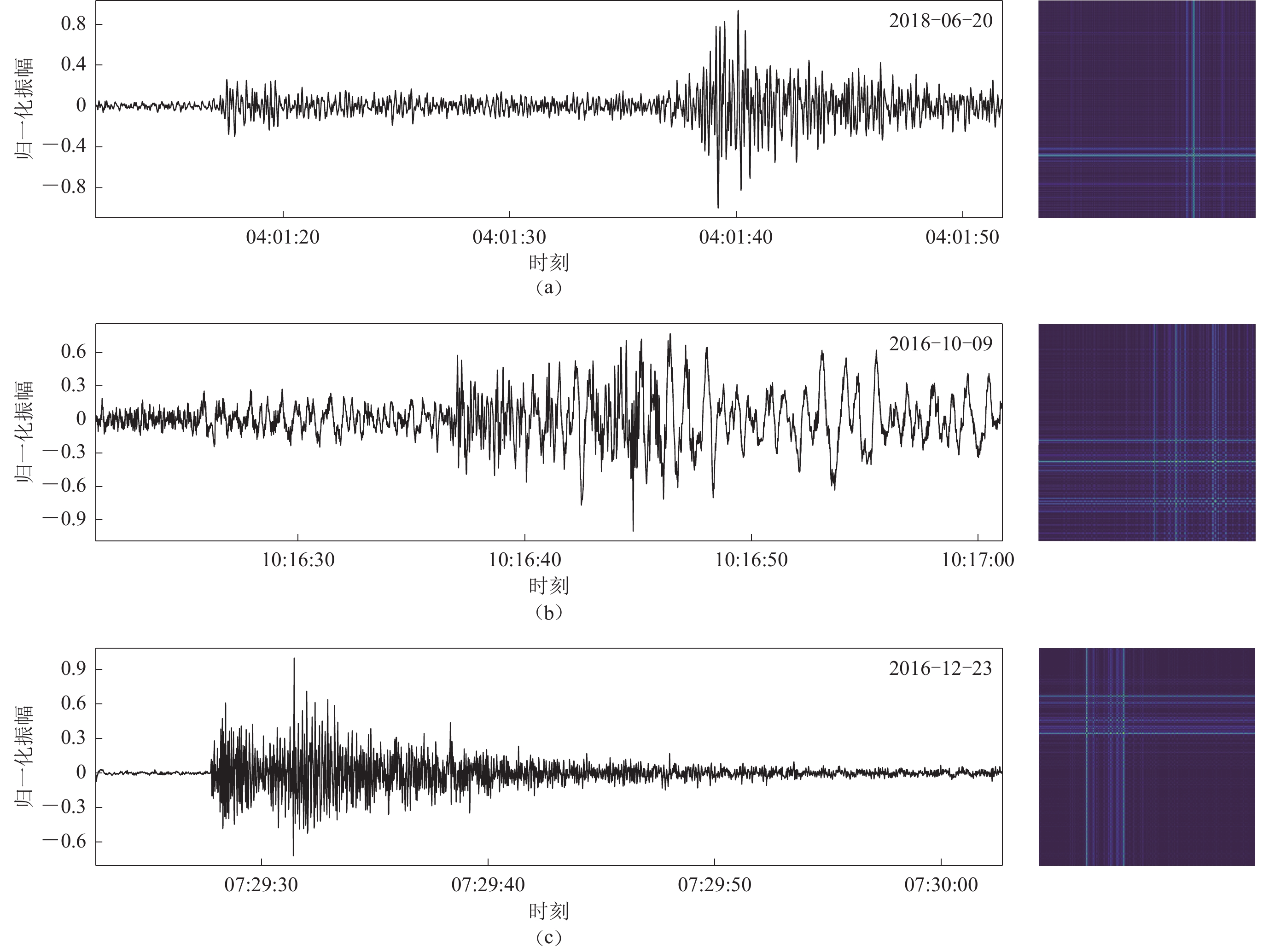Seismic events classification based on Gram’s angle field and multi-scale residual neural network
-
摘要:
以江苏地震台网中心搜集并标注的天然地震、人工爆破和塌陷事件为试验数据样本,提出了一种基于格拉姆角场和多尺度残差神经网络的新的地震事件分类方法。首先对波形数据进行滤波、归一化等预处理,然后应用格拉姆角场对地震波形数据进行二维编码得到二维图像,再将此经过编码后的图像作为多尺度残差神经网络的输入进行分类模型的训练和测试,从而得出分类结果。采用上述方法对1 078个天然地震台站记录、981个爆破台站记录和830个塌陷台站记录进行试验,结果显示:最终以单条波形为单位的地震事件分类准确率为92.55%,以单个台站为单位的分类准确率为96.36%,这表明基于格拉姆角场和多尺度残差神经网络的地震分类方法具有良好的效果。
-
关键词:
- 地震分类 /
- 格拉姆角场(GAF) /
- 深度学习 /
- 多尺度残差网络
Abstract:The rapid advancement of seismic observation systems has ushered in an era of seismic big data, encompassing both artificial and natural events. This development presents new challenges that necessitates precise seismic event classification to enhance earthquake response strategies and seismological research. This paper presents a novel approach for classification seismic events, integrating Gram’s angle field (GAF) with a multi-scale residual neural network, designated as QxceptionNet. The GAF method converts seismic wave time series into a graphic representation, preserving the interdependencies among different sampling points. The application of multi-scale convolutional analysis in this context reveals a more detailed feature set within the GAF images. Additionally, the residual structure of networks is designed to prevent performance degradation, even as network depth increases. The synergy of these elements forms the foundation of our proposed methodology. The approach utilizes a dataset meticulously compiled and labeled by the Jiangsu Earthquake Agency, encompassing station records of natural earthquakes, artificial blasts, and collapses. Each record consists of three-channel waveforms. As an initial step, the raw seismic waveforms are normalized in amplitude, linearly detrended, and filtered to reduce effects from the recording instruments. To maintain consistency, all waveforms are truncated to a standardized length of 40 seconds. Subsequently, those waveforms are transformed into GAF images. These images, along with their respective category labels, serve as inputs for the QxceptionNet. The network’s training results in outputting probabilities, categorizing the waveform data into one of the three seismic event types. Our results indicate impressive classification accuracies across various seismic event categories, emphasizing the efficacy of this approach in seismic classification. The test results show that the accuracy for 1 078 natural seismic event records, 981 blast records, and 830 collapse records are 92.55% for classifications based on individual waveform records and 96.36% for those based on single station records. Notably, these accuracies surpass those achieved by other methods, such as support vector machine (SVM), multi-layer perceptron (MLP) and short-time Fourier transform (STFT) combined with convolutional neural network (CNN). These findings suggest that the combined use of the Gram’s angle field and multi-scale residual neural networks is highly effective in distinguishing different types of seismic events. In summary, this paper elucidates the process of transforming seismic waveform data into GAF images, the architectural design of the network model, and the comprehensive experimental setup and results. Looking ahead, broadening the scope of the classification system to encompass a more diverse array of seismic occurrences and integrating a wider variety of samples will be essential in creating an all-encompassing and intelligent seismic event detection system.
-
-
图 3 本文应用于地震事件分类的多尺度残差网络模型QxceptionNet
图中Conv表示常规卷积,紧跟其后的数字表示卷积核的个数,也是经过该层操作后的输出通道数。s表示卷积步长。未特殊标明大小的常规卷积核大小均为3×3,图中的多尺度卷积均采用图1所示的多尺度卷积单元,紧跟多尺度卷积层后数字表示经过该卷积层的输出通道数
Figure 3. QxceptionNet as the multi-scale residual network model applied to classification of seismic events in this study
“Conv” represents regular convolution,and the number immediately following it indicates the number of convolutional kernels,which is also the number of output channels after passing through that layer. “s” represents the stride of the convolution. Unless specifically noted,the size of the regular convolutional kernels is 3×3. The multi-scale convolutions in Fig. 1 all use the multi-scale convolutional units shown in Fig. 1,with the number immediately following the multi-scale convolutional layer indicating the number of output channels after passing through that convolutional layer
表 1 以单条波形为单位的地震事件分类准确率
Table 1 Accuracy of earthquake events classification by single waveform
方法 地震事件类别的准确率 平均准确率 天然地震 爆破 塌陷 原始信号+SVM 73.75% 56.32% 67.45% 65.84% 原始信号+MLP 76.42% 60.72% 68.49% 68.54% STFT+CNN 89.17% 89.75% 90.23% 89.72% GAF+CNN 88.14% 88.85% 90.04% 89.01% STFT+QxceptionNet 91.97% 90.14% 89.96% 90.69% GAF+QxceptionNet 93.56% 91.75% 92.34% 92.55% 表 2 以单个台站记录为单位的地震事件分类准确率
Table 2 Accuracy of earthquake events classification by single station records
方法 地震事件类别的准确率 平均准确率 天然地震 爆破 塌陷 原始信号+SVM 76.17% 64.74% 72.57% 71.16% 原始信号+MLP 78.67% 72.21% 71.12% 74.00% STFT+CNN 94.64% 94.11% 93.67% 94.14% GAF+CNN 92.14% 92.37% 93.88% 92.80% SFTT+QxceptionNet 95.74% 94.32% 94.01% 94.69% GAF+QxceptionNet 96.75% 95.75% 96.58% 96.36% -
高家乙,刘晓锋,闫睿. 2020. 河南平顶山平煤矿区天然地震、爆破、塌陷时频特征分析[J]. 地震地磁观测与研究,41(3):67–74. Gao J Y,Liu X F,Yan R. 2020. Time-frequency analysis of seismic records generated by natural earthquakes,blasts,and collapses near Pingmei mine based on STFT[J]. Seismological and Geomagnetic Observation and Research,41(3):67–74 (in Chinese).
黎炳君,黄汉明,王婷婷,王鹏飞,王梦琪,施佳朋,薛思敏. 2021. 基于STFT和CNN的地震信号分类识别研究[J]. 地球物理学进展,36(4):1404–1411. Li B J,Huang H M,Wang T T,Wang P F,Wang M Q,Shi J P,Xue S M. 2021. Research on seismic signal classification and recognition based on STFT and CNN[J]. Progress in Geophysics,36(4):1404–1411 (in Chinese).
赵明,陈石,Yuen D. 2019. 基于深度学习卷积神经网络的地震波形自动分类与识别[J]. 地球物理学报,62(1):374–382. Zhao M,Chen S,Yuen D. 2019. Waveform classification and seismic recognition by convolution neural network[J]. Chinese Journal of Geophysics,62(1):374–382 (in Chinese).
Chollet F. 2017. Xception:Deep learning with depthwise separable convolutions[C]//Proceedings of 2017 IEEE Conference on Computer Vision and Pattern Recognition. Honolulu,Hawaii:IEEE:1800−1807.
Horn R A,Johnson C R. 2012. Matrix Analysis[M]. 2nd ed. Cambridge:Cambridge University Press:441−442.
He K,Zhang X,Ren S,Sun J. 2016. Deep residual learning for image recognition[C]//Proceedings of 2016 IEEE Conference on Computer Vision and Pattern Recognition. Las Vegas:IEEE:770−778.
Keogh E J,Pazzani M J. 2000. Scaling up dynamic time warping for datamining applications[C]//Proceedings of the Sixth ACM SIGKDD International Conference on Knowledge Discovery and Data Mining. New York:Association for Computing Machinery:285–289.
Laasri E H A,Akhouayri E,Agliz D,Atmani A. 2013. Seismic signal classification using multi-layer perceptron neural network[J]. Int J Comput Appl,79(15):35−43.
Li J,Fang F M,Mein K F,Zhang G X. 2018. Multi-scale residual network for image super-resolution[C]//Proceedings of the 15th European Conference on Computer Vision. Munich:Springer:527−542.
Ross Z E,Meier M A,Hauksson E,Heaton T H. 2018. Generalized seismic phase detection with deep learning[J]. Bull Seismol Soc Am,108(5A):2894–2901. doi: 10.1785/0120180080
Simonyan K,Zisserman,A. 2015. Very deep convolutional networks for large-scale image recognition[C]//Proceedings of the 3rd International Conference on Learning Representations. San Diego:Institute for Catastrophic Loss Redu Ction:1−12.
Szegedy C,Vanhoucke V,Ioffe S,Shlens J,Wojna Z. 2016. Rethinking the inception architecture for computer vision[C]//Proceedings of 2016 IEEE Conference on Computer Vision and Pattern Recognition. Las Vegas:IEEE:2818−2826.
Tang L,Zhang M,Wen L X. 2020. Support vector machine classification of seismic events in the Tianshan orogenic belt[J]. J Geophys Res: Solid Earth,125(1):e2019JB018132. doi: 10.1029/2019JB018132
Wang Z G,Oates T. 2015. Imaging time-series to improve classification and imputation[C]//Proceedings of the 24th International Conference on Artificial Intelligence. Buenos Aires,Argentina:AAAI:3939−3945.
Yano K,Shiina T,Kurata S,Kato A,Komaki F,Sakai S,Hirata N. 2021. Graph-partitioning based convolutional neural network for earthquake detection using a seismic array[J]. J Geophys Res: Solid Earth,126(5):e2020JB020269. doi: 10.1029/2020JB020269
-
期刊类型引用(8)
1. 张智河, 陈顺云, 刘培洵. 热测应力的技术基础:高精度多通道低功耗温度测量系统. 地震地质. 2018(02): 499-510 .  百度学术
百度学术
2. 成万里, 王秀英. 基于数据的前兆仪器分辨力检测方法研究. 山西地震. 2018(03): 10-13 .  百度学术
百度学术
3. 邱永平. 高精度温度计在同层水温平行观测中的互相干扰现象. 中国地震. 2016(01): 151-156 .  百度学术
百度学术
4. 李国佑, 白占孝, 张敏. 德令哈地震台水温对比观测分析. 地震研究. 2014(S1): 68-71 .  百度学术
百度学术
5. 蒲小武, 梅东林, 陈彦平, 叶媛媛, 王军燕, 许可娟. 甘东南4井水温资料在汶川M_S8.0地震前后的异常变化特征分析. 国际地震动态. 2014(02): 17-23 .  百度学术
百度学术
6. 蒲小武, 武银, 狄国荣, 梅东林, 陈彦平, 王军燕, 叶媛媛. 甘肃清水温泉井与临夏井水温在汶川地震前后的异常变化特征. 地震研究. 2013(03): 269-274+407 .  百度学术
百度学术
7. Digitization characteristics of geothermal information and structural analysis of 2011 off the Pacific coast of Tohoku Ms9.0 earthquake. Engineering Sciences. 2012(04): 90-96 .  必应学术
必应学术
8. 邱永平. 宁波地震台ZK03井水温平行观测资料的对比分析. 中国地震. 2011(04): 431-437 .  百度学术
百度学术
其他类型引用(0)




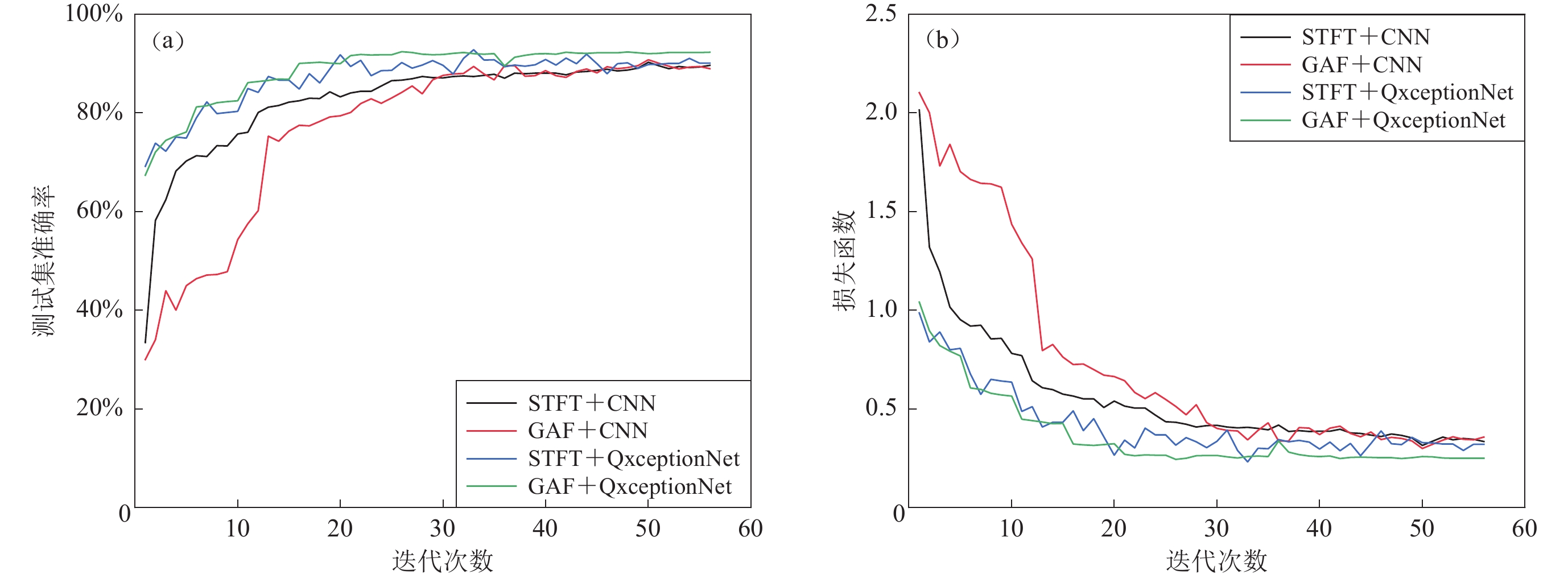
 下载:
下载:
